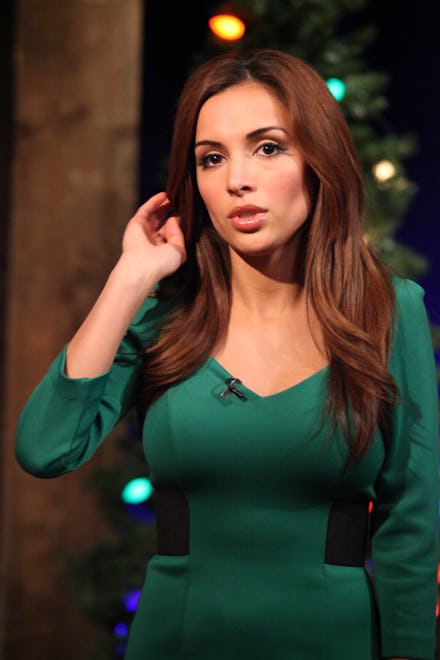Liberté Chan Isn't the Only One — There's a Long History of Sexualizing "Weather Girls"

On May 14, Los Angeles TV weather presenter Liberté Chan was told to wear a sweater to cover herself up during her broadcast. The clip went viral and sparked immediate online backlash, with social media users accusing the network of slut-shaming and being sexist.
Chan quickly went online to say she wasn't offended by being asked to don the sweater. "I was not ordered by KTLA to put on the sweater. I was simply playing along with my co-anchor's joke," she wrote on her blog. "If you've ever watched the morning show, you know we poke fun at each other all the time."
Yet Chan's sparkly dress controversy highlights the way that female meteorologists, or "weather girls," are explicitly sexualized more than other anchorwomen. Often, they're more scantily clad and more made up than other on-air female broadcasters. "Sometimes what to wear is the biggest stress of my job," Weather Channel veteran Jen Carfagno told Slate in an interview.
The trend of sexualizing female weather presenters has its roots in the history of American broadcast news. Networks started hiring female weather presenters in the 1950s, long before female journalists were regularly employed by major networks. According to a study on the history of women weathercasters published in the American Meteorological Society journal, these young women were hired as a "gimmick" alongside other media ploys like puppets, as early broadcasters struggled to keep audiences tuned in during weather reports.
In 1952, 26-year-old Carol Reed became one of the first weather girls, despite the fact that she had "no qualifications" aside from her beauty and perkiness. These women weren't supposed to remind viewers of stuffy scientists; they were supposed to appear relatable and charming.
"The clear emphasis on looks and style among many 'weather girls' coincided with public skepticism of women's scientific skills and with programmers' eagerness to trivialize the weather cast," author Robert Henson wrote in his history of broadcasting meteorology.
Over the next few decades, networks kept hiring "weather girls." The comely weather girl is now the industry norm around the world, from France to Mexico. The end of this TMZ ode to Mexican weather presenter Yanet Garcia, which concludes with the kicker, "no one cares what you're saying," proves that little has changed since the early 1950s.
Although Carol Reed and many of the pioneering women broadcasters of early television didn't hold degrees in meteorology, today women make up at least half of university meteorology science students, depending on the program. Those numbers have not translated into an equal number of female weather reporters: women currently deliver only 33% of on-air weather news, according to a 2014 report by the Women's Media Center.
Today, female meteorologists are still constantly criticized for their appearance and can lose their jobs if they speak out against the pressure. In 2012, for instance, African-American meteorologist Rhonda Lee was fired for defending her natural hair on Facebook.
Weather girls also tend to be subject to age discrimination, as they're usually only featured on-air as long as they look young. Former weather presenter Marny Stanier Midkiff, who had 16 years of experience under her belt, filed a lawsuit against the Weather Channel claiming the network fired her in 2003 because it wanted to hire sexy young anchors instead.
It's not hard to see why viewers were so outraged by Chan being forced to put on a sweater: it highlights the stark double standard that female broadcasters face. Male broadcasters aren't teased about needing to "cover up." You'd never hear, say, Al Roker say that choosing his outfit is one of the most stressful parts of his job. If the gender gap in broadcast media is going to close, female meteorologists need to not be treated like life-size Barbie dolls and instead, be treated like like, you know, actual professionals.
Correction: May 17, 2016